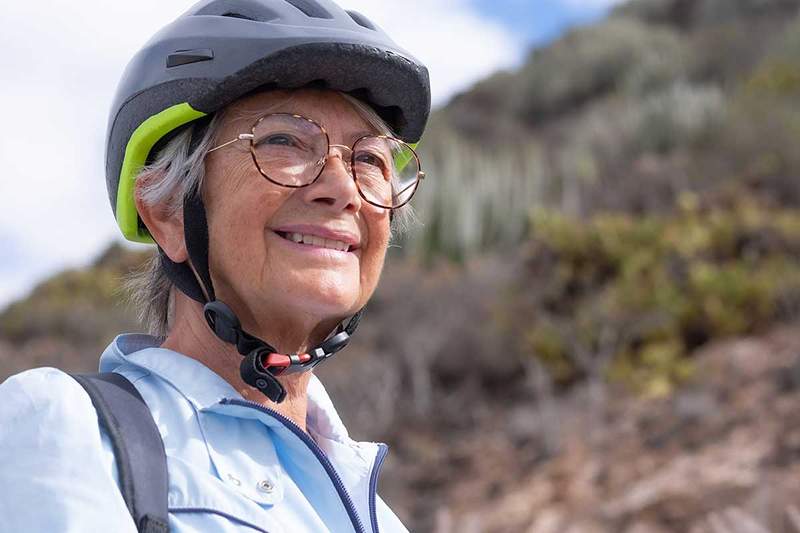How actively aging

- 2671
- 816
- Austin Stokes
Every day there are more people who are actively aging, but how do they do it? This has been booming and the media more and more comment on active aging.
What does it mean actively aging?
According to Ana María Ramos Monteagudo, in her article on active aging and the importance of her promotion for aging societies, the term was coined by the World Health Organization (WHO) at the end of the nineties with the aim of expanding what was known as healthy aging that, at that time, it was reduced to socio-sanitary and health factors.
Therefore, the notion of Active aging recognizes the influence of other variables and gives the activity an important role in the diversity of expressions of aging.
Now, the active aging approach has become important when the positive components are analyzed when aging, since it is based on the recognition of the human rights of the elderly and in the principles of the United Nations of: Independence, participation, dignity, care and self -realization.
At least this was promulgated at the 52nd World Health Assembly, of the World Health Organization, which took place on May 22, 1999 and in which the following points were highlighted:
- The role of health as a predictor of a good aging;
- Attention to older people in developing countries, regarding risks in security and social assistance, in addition to poverty and inequality and,
- The importance of promoting public policies with a gender perspective that give protection to the group of elderly, increasingly increasing.
According to WHO, Active aging is the process of making the most of the opportunities to have physical, psychic and social well -being lifelong.
In addition, it is considered the objective of extend the quality of life, productivity and life expectancy At advanced ages, with the minimum disability prevalence.
It is also important remain active in physical, social and mental areas, through participation in leisure or recreational activities; volunteer or paid activities, cultural, political and social activities; educational and training activities throughout life, as well as commitment to the community and family itself.
Therefore, actively aging is a phenomenon that originates from a series of factors, which not only contemplate medical care, but also consider other factors of economic, behavioral areas and the sociocultural environment, which encourages the aging of people. Thus, the concept of Active aging arises as a basic health promotion strategy, that is guided by the principles of the United Nations Organization, for the elderly.
According to it, Great relevance is given to independence, participation, assistance and security at the social level To reduce the risk factors of this population and strengthen the protective factors for people to enjoy more years, and with better quality.
The 3 pillars of active aging
Consequently, the three strategic pillars to actively age, according to WHO, are the following:
- The participation: Well, all people have the right to maintain the link with society, regardless of their age; In addition to contributing to paid programs and activities, highlighting that Social activities are related to personal well -being In the elderly, since the approval, integration and social belonging is given. Participation in social activities can contribute to the good integral health of people, since It fulfills a protective function of physical and mental diseases, which not only helps improve health, but to extend the period of life.
- Health: referred to the prevention of the disease and the promotion of healthy habits, In order to delay dependence. The scientific, bio-medical, educational, health and public policies advance.
- Safety: This implies guaranteeing appropriate protection in situations of risk or necessity and It refers to security in economic and health benefits, as well as access to services.
In short, aging actively implies being active in the three spheres mentioned: physics, psychological and social. When talking about active aging, it is also associated with other concepts, such as aging successfully, satisfactory, healthy, among others.
It is recommended to perform some physical activity and maintain a good diet to actively age.
Also, it is recommended Maintain a quality social circle, without the amount amount, but how satisfactory the social relationships that are maintained with friends, family, colleagues or other.
Likewise, you can work motivation through objectives or purposes in life and finally, set certain challenges at the cognitive level, in which the hobbies, logic games, reading, among others, so that the brain continues to function, especially memory and attention.
Sexlescents, when age does not prevent life from enjoying
Bibliography
- Fernández-Ballesteros, r. (2009). Active Aging: Psychology Contributions. Madrid: Pyramid.
- Fernández-Ballesteros, r., Caprara, m. G., Iñiguez, J. AND., & Garcia, L. F. (2005). Promotion of active aging: Effects of the program "Living with vitality". Spanish journal of geriatrics and gerontology, 40 (2), 92-103.
- Oddone, m. J. (2013). Theoretical background of active aging.
- Ramos Monteagudo, to. M., Yordi Garcia, M., & Miranda Ramos, M. D. L. TO. (2016). Active aging: importance of its promotion for aging societies. Camagüey Medical Archive Magazine, 20 (3), 330-337.

